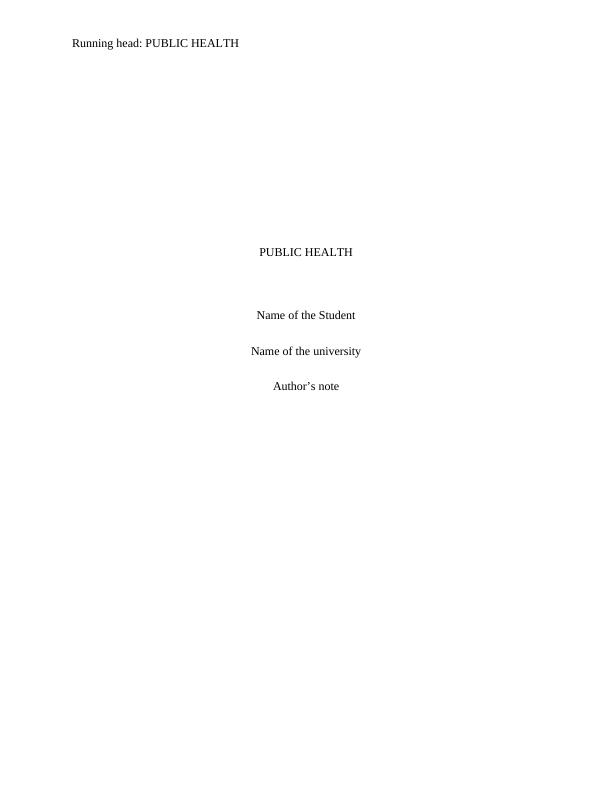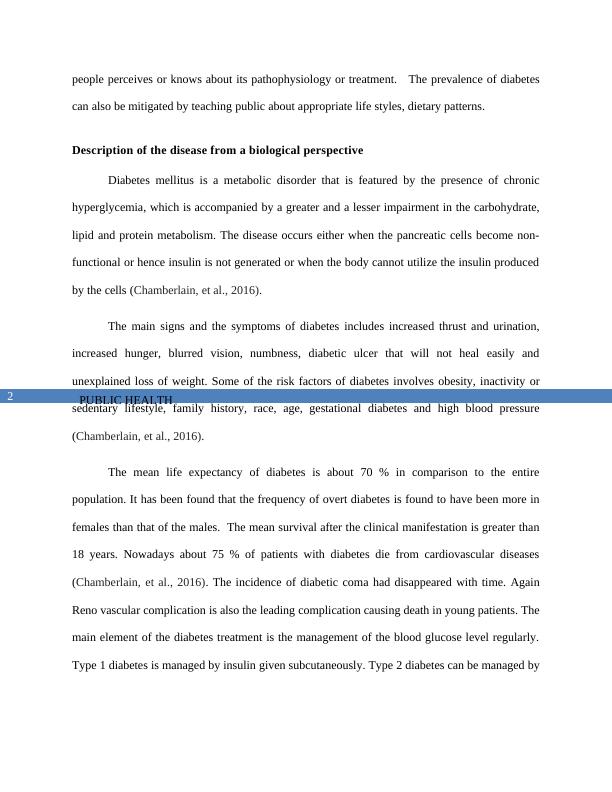Diabetes Mellitus: A Public Health Perspective
Select a chronic disease linked to behavioral risk factors, describe it from a public health and biological perspective, document how behavior initiates pathogenesis, and propose an innovative plan of action to address health behavior challenges.
7 Pages1377 Words59 Views
Added on 2022-12-19
About This Document
This report provides a description of diabetes mellitus from both a public health and biological perspective. It discusses the disease's impact on the population, its pathophysiology, and a plan of care for managing health behavior related to diabetes. The report also highlights the importance of promoting a healthy lifestyle and diet to mitigate the prevalence of diabetes.
Diabetes Mellitus: A Public Health Perspective
Select a chronic disease linked to behavioral risk factors, describe it from a public health and biological perspective, document how behavior initiates pathogenesis, and propose an innovative plan of action to address health behavior challenges.
Added on 2022-12-19
ShareRelated Documents
End of preview
Want to access all the pages? Upload your documents or become a member.
Diabetes Prevention and Control: Interventions and Integrated Behavioral Model
|20
|5535
|11
Diabetes Mellitus: Pathophysiology, Diagnosis, and Interventions
|9
|2700
|450
Type 2 Diabetes: Causes, Symptoms, and Treatment
|17
|3481
|229
Diabetes Needs Assessment in a Community with Identified Areas
|11
|3224
|207
Diabetes Mellitus (Type II): Pathophysiology, Symptoms, Treatment and Relevance to Nursing Practice
|22
|2061
|395
Literature Review on Public Health
|11
|3801
|71



